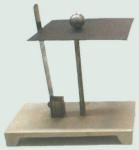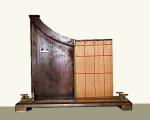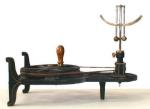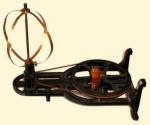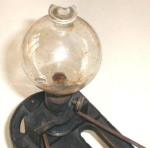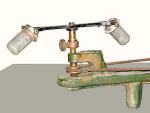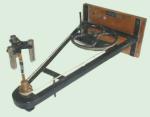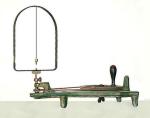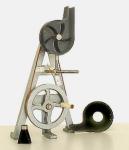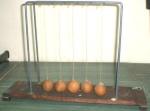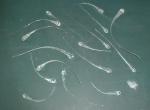School
Spano(1), Pellegrini (2)
|

|
Function
To show that the centrifugal force is directly proportional to the mass.
|
Maker:
(1) Paravia - Turin
(2) Tarquini - Rome
| Price:
-
L 70
| Purchase date:
1928
1926
|
|
Description
Two glass test tubes inclined and symmetrical with respect to the axe of rotation, hold water mercury and two balls of plumb
and of cork oak. During the motion the different substances assume an inverse distribution from the normal one, because the centrifugal
force is proportional to the density, when the volumes are equal.
|


 Menu
Menu
